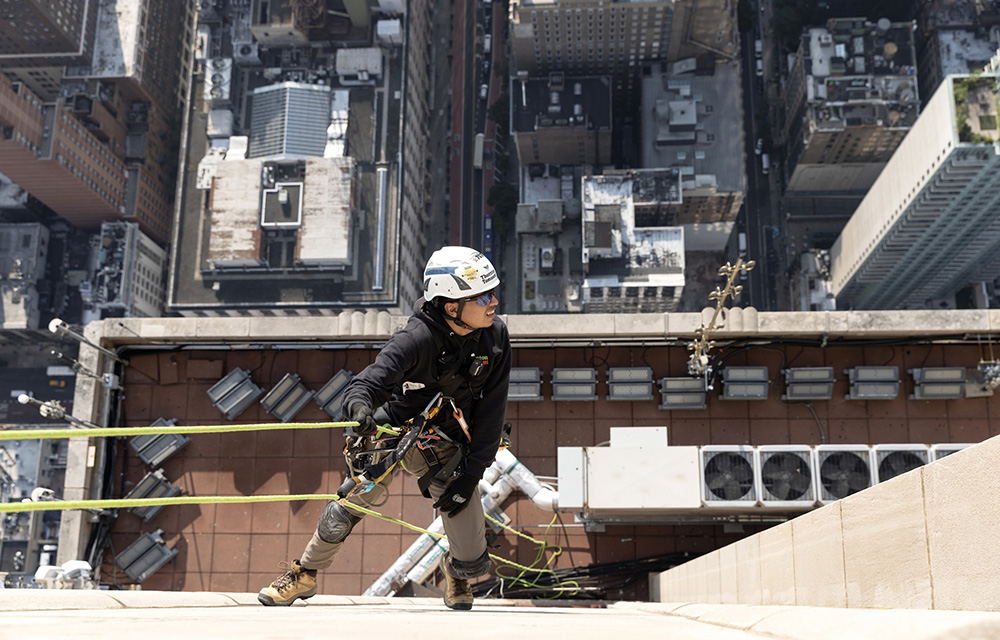How an informed property maintenance plan can prevent structural failures - by Kevin Paul

When any part of a structure fails, the first questions are why and how. To answer these questions failure analysis must be conducted, and the root cause determined. According to professionals who specialize in failure analysis, the root cause most often points to improper or deferred maintenance. This cause should give us all a level of comfort because it can be prevented by what is, as common sense would dictate, proper maintenance. However, the problem remains that if building owners are unaware of what proper maintenance of their building includes, failure will continue to be what prompts deterioration and changes to structures. The key is learning from past building failures and taking a detailed look into the requirements of the property maintenance code to establish a plan to ensure the building’s health remains intact.
Every state follows a property maintenance code, developed to address any area-specific factors that contribute to the health of a building. The Property Maintenance Code of New York State (PMCNYS), for example, regulates the minimum maintenance requirements for existing buildings in New York State. It establishes minimum maintenance standards for basic structures, equipment, light, ventilation, heating, sanitation, and fire safety. Responsibility is fixed among owners, operators, and occupants for code compliance. The PMCNYS provides for the regulation and safe use of existing structures in the interest of the social and economic welfare of the community. In New York State, the authority having jurisdiction (usually, the local building department) will exercise its powers to extend to the public, protection from the hazards of threat to human life, safety, or health if a structure is dangerous or unsafe due to decay or faulty construction. Although it is up to the property owner or occupants to identify and investigate issues from deferred or lack of maintenance, the authority having jurisdiction is responsible to exercise its powers to protect the public.
In response to the epic building failure in Florida, code changes are anticipated across the country which will provide more detailed guidance on what is required of building owners to ensure their building is safe. New York City’s code, amongst the strictest in the Northeast, may provide an example of what codes could look like after these changes are in place. An example of a unique building code requirement in New York City is their Façade Inspection Safety Program, previously known as Local Law 11. This program requires owners of buildings that are six stories above grade to have a Qualified Exterior Wall Inspector inspect the exterior walls, as well as conditions behind the façade exposed by mandatory probes which reveal what is happening behind the face of the building. This requirement is necessary because failure within the cavity is often not visible on the façade and waiting until these failures translate to the face might be too late. The inspector, who must be a licensed Registered Architect or Professional Engineer, then presents a report summarizing the condition of the building to the New York City Department of Buildings.
However, there is no requirement for buildings to be inspected after receiving their Certificate of Occupancy in New York State outside of the city; the only structure that currently has additional inspection requirements at the state level are parking garages as per code 19 NYCRR Parts 1202, 1203,1204, effective as of August 29, 2019. The lack of regulatory jurisdiction beyond this, which is common across the tri-state, places the responsibility of ensuring the building is safe solely on the owner as there is no requirement for reports to be submitted to the authority having jurisdiction confirming the condition of buildings. Regardless of what the specific state code says, being proactive in maintaining the building envelope and preventing structural deterioration will only provide extended life of the building, ensure the safety of the inhabitants, and hopefully allow building management to avoid urgent and expensive emergency repairs.
The best way to find issues before they become urgent is with continued monitoring of buildings to ensure they comply with the property maintenance code. Crack monitors, for example, can be installed at cracks on the building façade and monitor for additional movement or deterioration. Through regular inspections, owners can sufficiently address any areas that need improvement. Though it will depend on the features of the specific building, multiple points on the exterior and interior of the building must be inspected, including the roof, façade, and any paved surfaces, as well as plumbing, HVAC, and electrical systems. These multiple facets are directly addressed with condition requirements in the property maintenance code and have significant implications for the overall health of the building.
If a problem is acknowledged before a structure fails, mitigation methods can resolve the issue or at the very least prevent collateral damage. An expert who is skilled at building inspections is key to uncovering any dangers and can make the necessary recommendations to keep occupants safe. The case of the Mineola Fire Department represents an example of how failure can be prevented if care is taken in time. The fire department called for an inspection of the property when the ceiling tiles began to fall. The inspector did not suspect any serious problem with the building based on the initial report. However, once they completed a thorough inspection, it was discovered that the roof, which was wood bowstring truss construction, was at risk of caving in. Immediately, an order of evacuation was issued until temporary structural support could be installed. This fix allowed for the safe use of the building, with continued monitoring, for a year and a half. The building ultimately had to be demolished and is now in the process of reconstruction, but the demolition was done in a controlled environment preventing any collateral damage. If the building owner had not taken the falling ceiling tiles as a sign of a potentially more serious problem, the structure would have collapsed before recommendations for mitigation could be made, resulting in a significant threat to human life.
In conclusion, building failures do not happen without warning. It is up to the building owner to see these warning signs and take appropriate action before real damage occurs. Understanding and complying with the property maintenance code is the first vital step. The next step is to consult with experienced professionals who can assist in developing a property maintenance plan specific to your building, including regular inspections and repairs. With a team of experts dedicated to ensuring the health of the built environment on your side, everyone is protected.
Kevin Paul, AIA, NCARB, LEED AP, is the vice president | director - private sector architecture at H2M architects + engineers, Melville, N.Y.
NYC mayor and DOB release comprehensive façade inspection and safety study conducted by Thornton Tomasetti








.gif)
.jpg)

.gif)